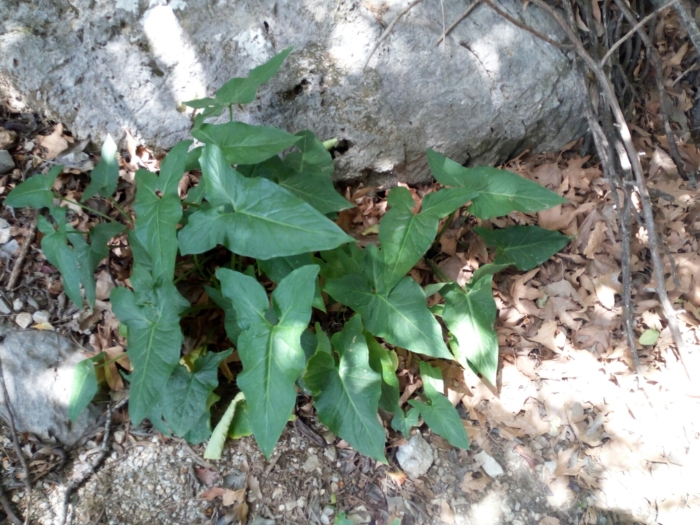Crete Arum
(Arum concinnatum)
Crete Arum (Arum concinnatum)
/
/

Mattia Aaron Miroddi
Public Domain
Image By:
Mattia Aaron Miroddi
Recorded By:
Copyright:
Public Domain
Copyright Notice:
Photo by: Mattia Aaron Miroddi | License Type: Public Domain | License URL: http://creativecommons.org/publicdomain/zero/1.0/ | Rights Holder: Mattia Aaron Miroddi | Publisher: iNaturalist | Date Created: 2017-05-09T12:43:58-07:00 |




















Estimated Native Range
Summary
Arum concinnatum, commonly known as Crete Arum, is an evergreen perennial herb native to the understory of open woodlands and rocky areas in the Eastern Mediterranean, particularly on the island of Crete. It typically grows to a height and width of 1-2 feet (0.3-0.6 meters). The plant features arrow-shaped, glossy green leaves and is known for its unusual inflorescence, which consists of a yellow spadix surrounded by a purple spathe, blooming in the spring, fall, and winter. The flowers are modest in size but can be quite showy due to their unique coloration.
Crete Arum is valued for its attractive foliage and distinctive flowers, which can add an exotic touch to shaded garden areas. It is often used in cultivation for border planting, as a ground cover, or in woodland gardens. The plant prefers moist, humus-rich soil and can tolerate a range of light conditions from full sun to full shade. While it is drought-tolerant once established, it benefits from consistent moisture. It is generally pest-free but can be susceptible to root rot if overwatered. Crete Arum is not known for being invasive and can be a charming addition to the right garden setting.CC BY-SA 4.0
Crete Arum is valued for its attractive foliage and distinctive flowers, which can add an exotic touch to shaded garden areas. It is often used in cultivation for border planting, as a ground cover, or in woodland gardens. The plant prefers moist, humus-rich soil and can tolerate a range of light conditions from full sun to full shade. While it is drought-tolerant once established, it benefits from consistent moisture. It is generally pest-free but can be susceptible to root rot if overwatered. Crete Arum is not known for being invasive and can be a charming addition to the right garden setting.CC BY-SA 4.0
Plant Description
- Plant Type: Herb
- Height: 1-2 feet
- Width: 1-2 feet
- Growth Rate: Moderate
- Flower Color: N/A
- Flowering Season: Spring, Fall
- Leaf Retention: Evergreen
Growth Requirements
- Sun: Full Sun, Full Shade, Part Shade
- Water: Medium
- Drainage: Medium
Common Uses
Low Maintenance, Potted Plant, Rock Garden
Natural Habitat
Understory of open woodlands and rocky areas in the Eastern Mediterranean
Other Names
Common Names:
Scientific Names: , Arum concinnatum, Arum nickelii, Arum byzantinum, Arum italicum f. purpureopetiolum, Arum italicum f. viridipetiolatum, Arum italicum subsp. concinnatum, Arum italicum var. concinnatum, Arum italicum var. marmoratum, Arum italicum var. sieberi
GBIF Accepted Name: Arum concinnatum Schott